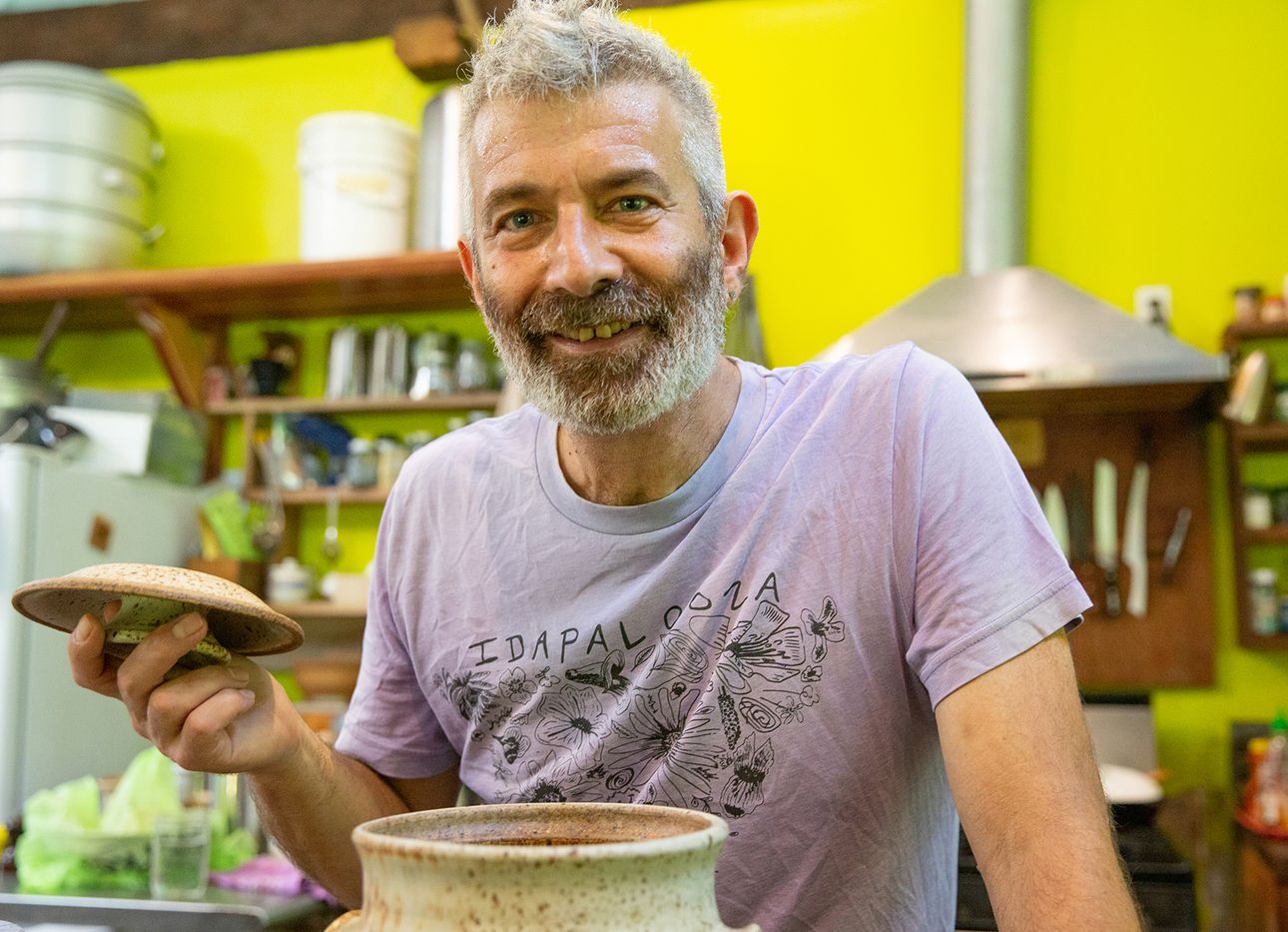
Sandor Katz Documents Fantastic Ferments From Around the World
For self-proclaimed “fermentation fetishist” Sandor Ellix Katz, fermentation is a subversive act. The age-old process—which involves preserving and metabolizing food by letting bacteria convert its starches and sugars into alcohol or acid, resulting in a distinctively tart taste—battles the pitfalls of big-factory food, cheap imports, and the fading away of elaborate, centuries-old culinary traditions. He details his wide-ranging experiences with, and reverence for, the practical procedure in his upcoming book, Sandor Katz’s Fermentation Journeys: Recipes, Techniques, and Traditions from Around the World (Chelsea Green Publishing), out next month. “Like any other manifestation of culture, fermentation practices must be used in order to maintain relevance and stay alive,” he writes. “We must cherish and celebrate the diversity of fermentation practices around the world, and document and share them.”
In turn, Katz, who was the guest on Ep. 80 of our At a Distance podcast, organized the book as an informative, user-friendly guide to learning about and preparing more than 60 uncommon ferments, including a surprisingly sweet sauerkraut chocolate cake, peppery turmeric mead, creamy tofu misozuke, and funky ricotta miso. He also takes readers in and out of kitchens he’s visited around the world, recalling certain fermented foods—and the traditions surrounding them practiced by local and indegenous peoples—that he observed (and ate) along the way. He explains how to make them, too: Highlights include Chinese doubanjiang, a savory paste made from fermented broad beans and chilies that’s long been used to add an umami flavor to dishes; and Ecuadorian chicha de jora, a corn beer historically consumed by the Incas in rituals and during religious festivals.
For the fermentation newcomer, Katz suggests starting with vegetables. “The process is so straightforward and intrinsically safe, [and] you can enjoy results relatively quickly,” he writes, noting that fermented plants are “delicious, nutritious, and rich in probiotic bacteria.” But Katz’s passion for the field allows him to draw in brewmasters and novices alike. He illustrates how fermentation has endured across place and time, and makes the practice relatable by situating it in readers’ very own kitchens. By the final page, he’s shown us why fermentation is more than a fad, and how to confidently cook up bubbling delicacies at home—no high-tech equipment or fancy starters required.